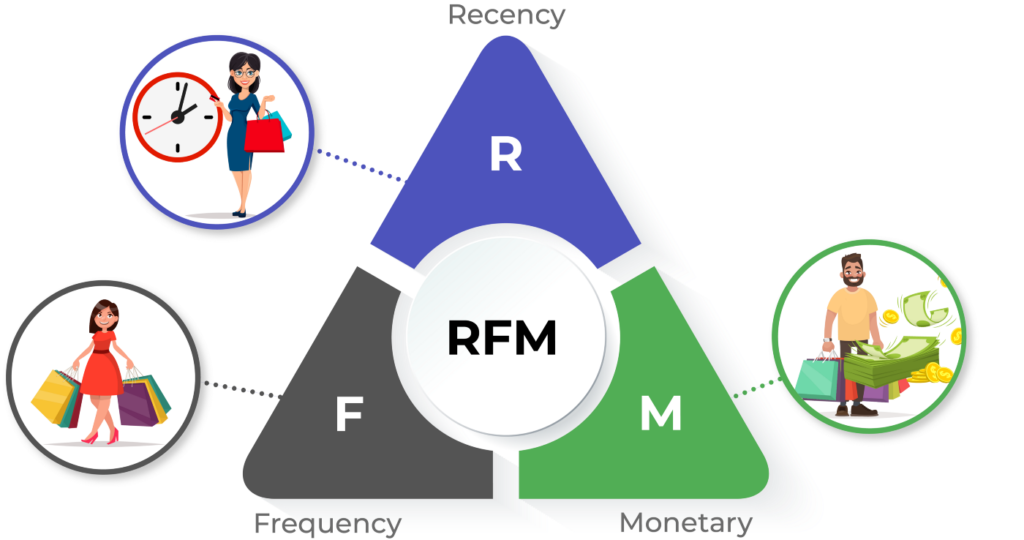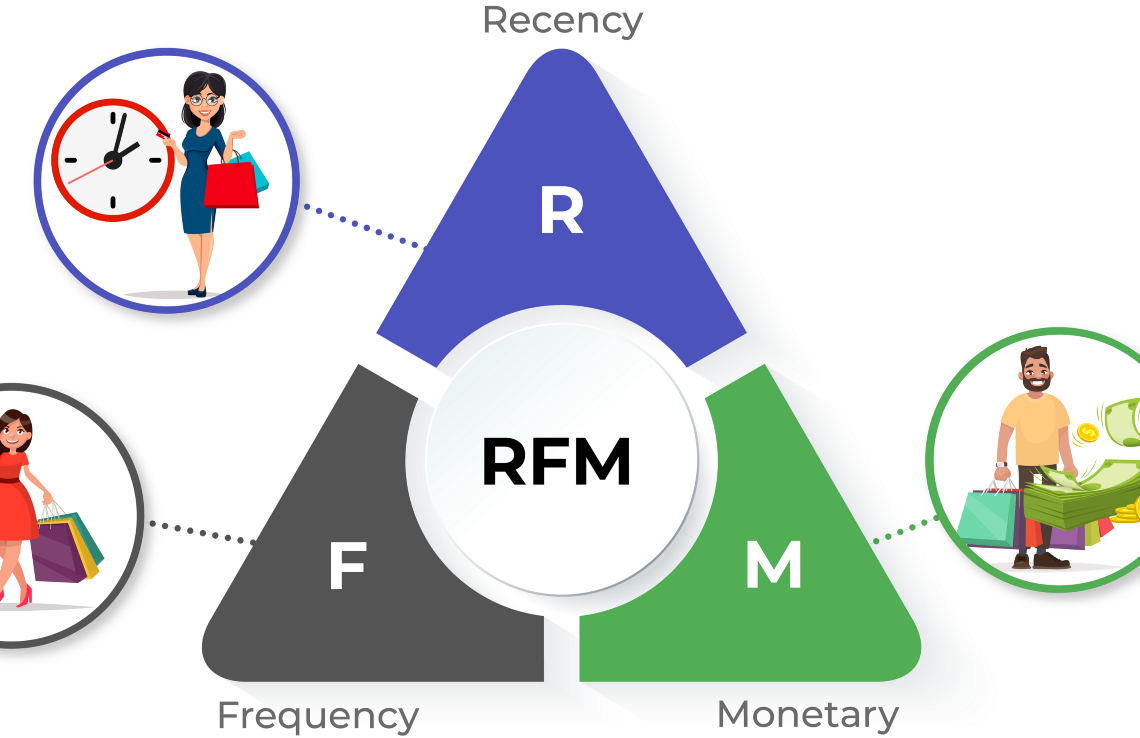
RFM modelling is a technique used by marketers to analyze customer behavior and identify the most valuable customers. RFM stands for Recency, Frequency, and Monetary value.
Recency: Refers to how recently a customer has made a purchase or interacted with your brand. Customers who have engaged with your business more recently are considered higher value compared to those who haven’t in awhile.
Frequency: Refers to how often a customer makes purchases or engages with your brand. Generally speaking customers who make frequent purchases or engage more frequently are considered higher value than those who don’t
Monetary Value : Relates to the amount of money spent on products/services by each individual user
By analyzing these three factors together businesses can identify which users have been the most profitable over time & use this information for optimized marketing strategies such as personalized messaging/campaigns targeted towards high-value segments etc.,
Here’s an overview of how RFM modelling works:
- Collect Data – Businesses must collect data from various sources including transaction records , website analytics etc.,
- Score Users – After collecting data, we assign scores based on recency, frequency, and monetary values separately
- Segment Creation – Based on scored data we create different segment groups (high-value customers/low-value customers)
- Targeted Messaging- Segments identified through RFM modeling could be targeted using effective messaging techniques leading towards improved engagement rates & conversions
- Continuous Analysis – The segmentation process should be ongoing in order to ensure that messaging remains relevant and up-to-date.
By implementing effective RFM modelling practices businesses could better understand their customers leading towards increased personalization ultimately resulting in higher engagement rates while simultaneously improving brand loyalty ultimately leading towards increased revenue streams .
